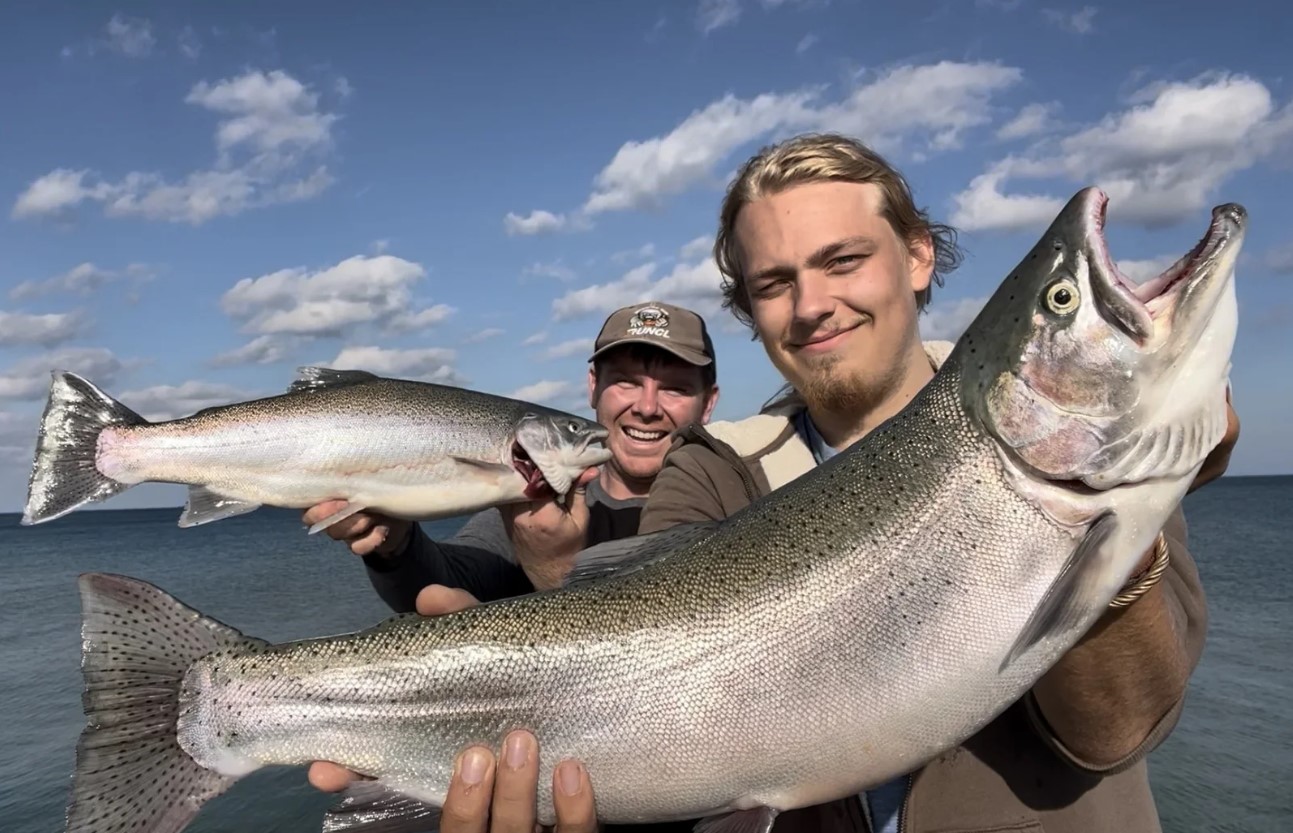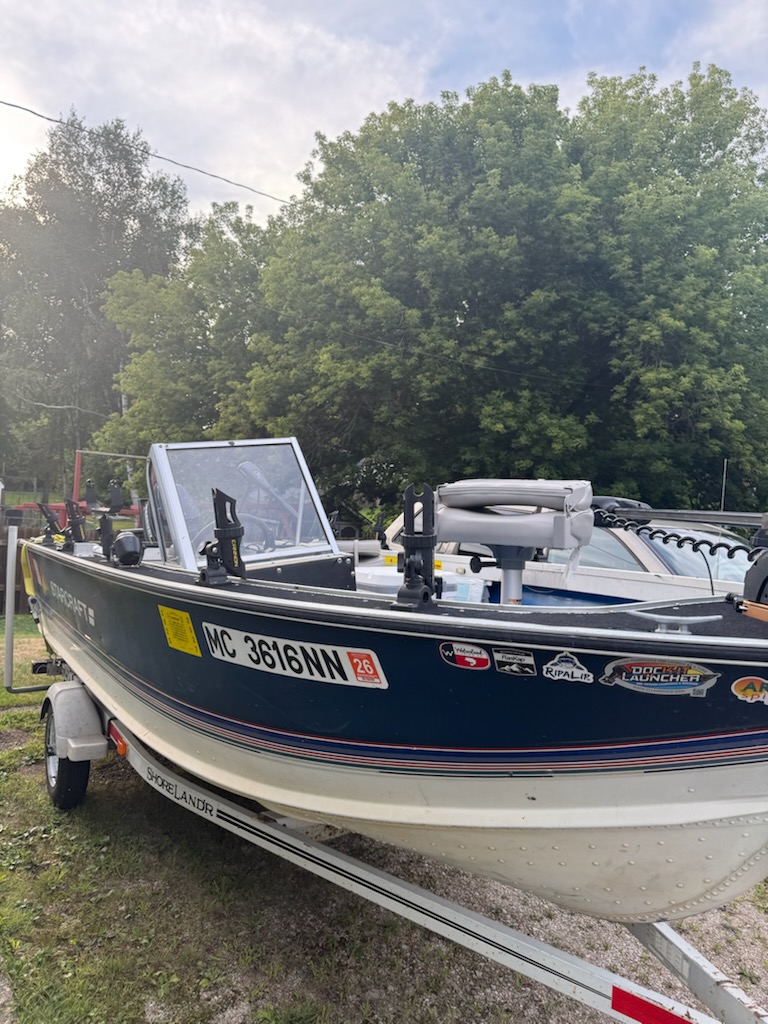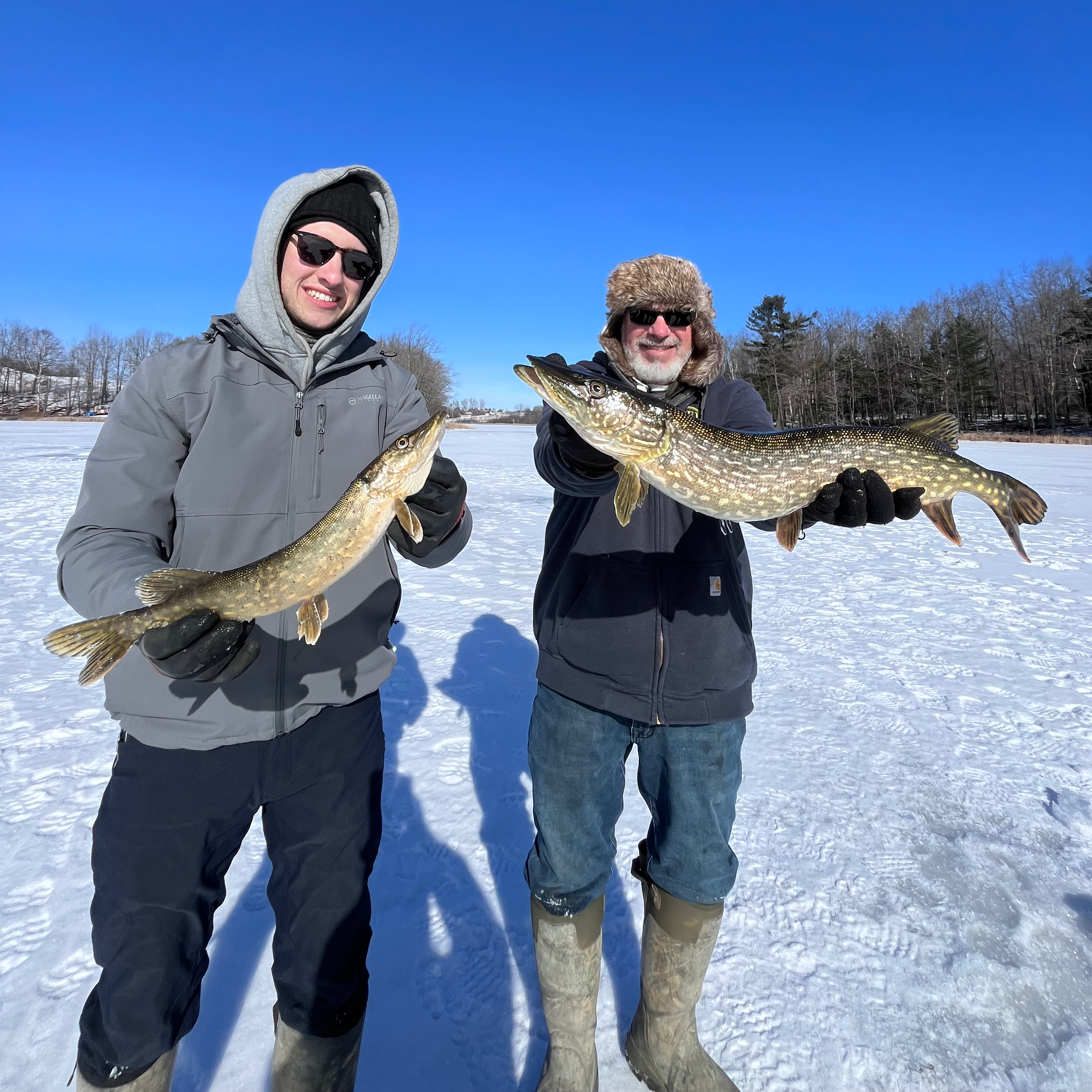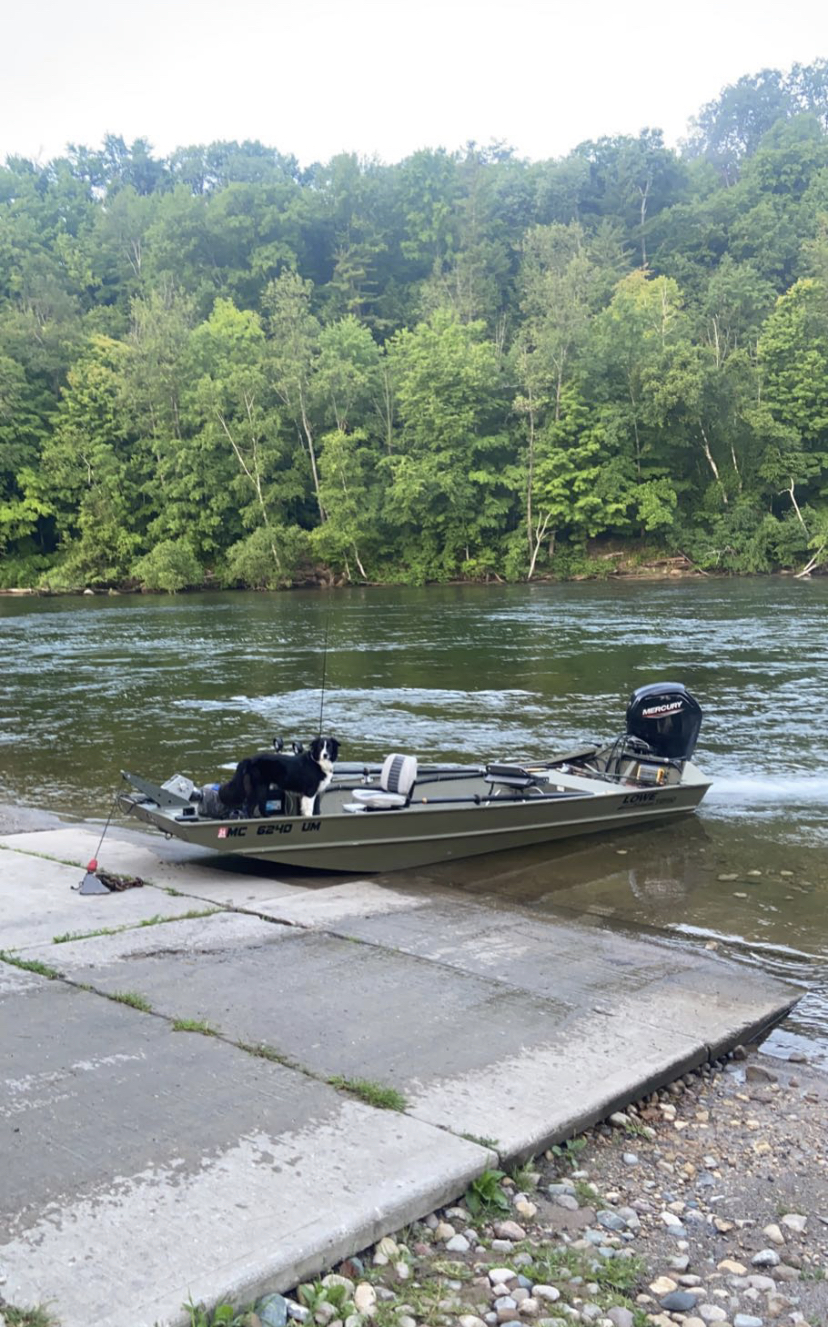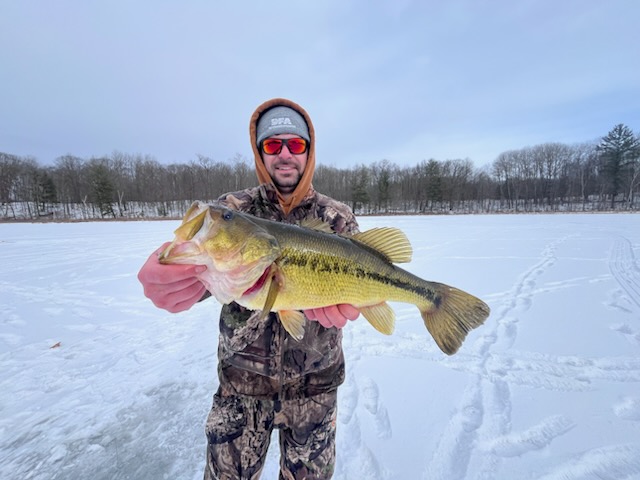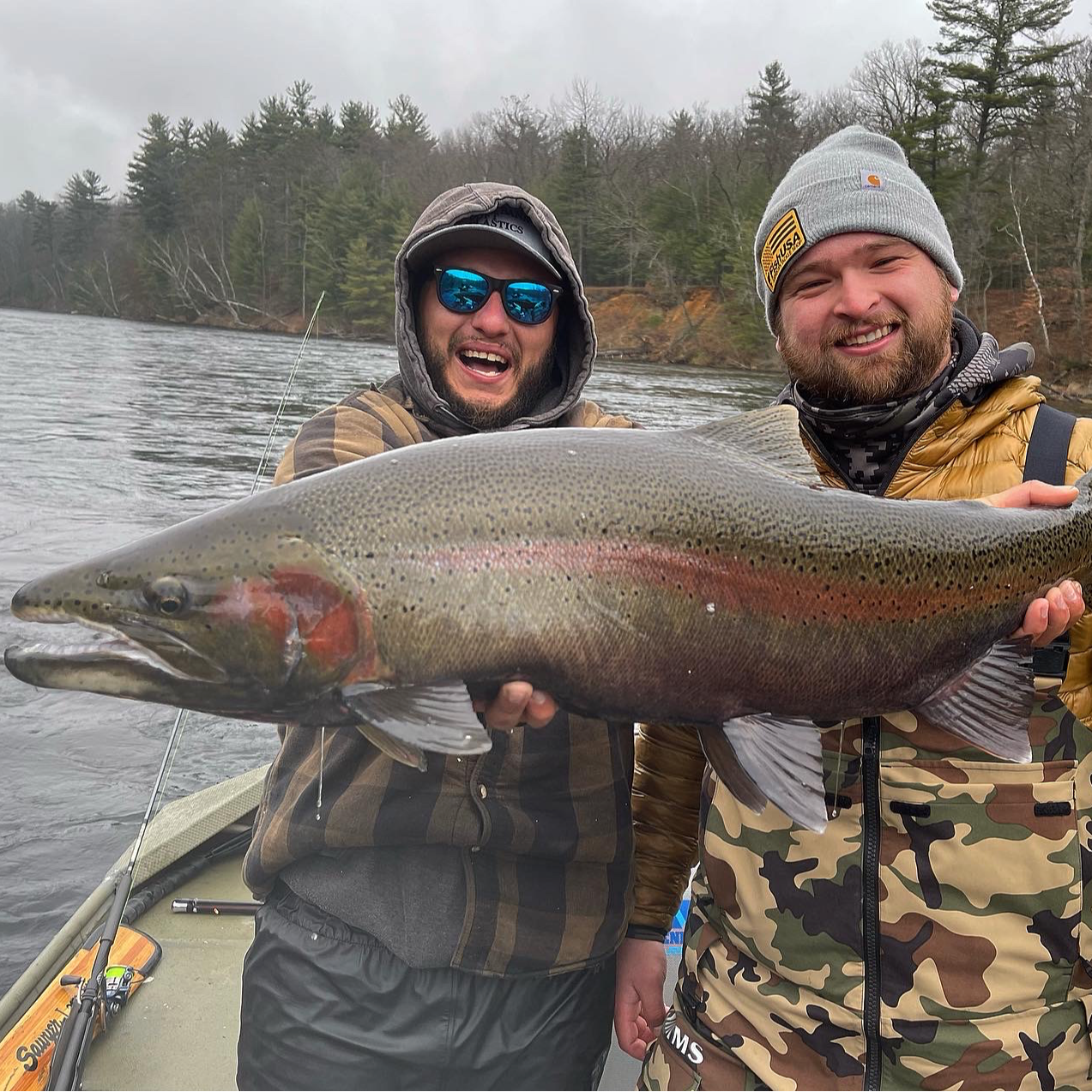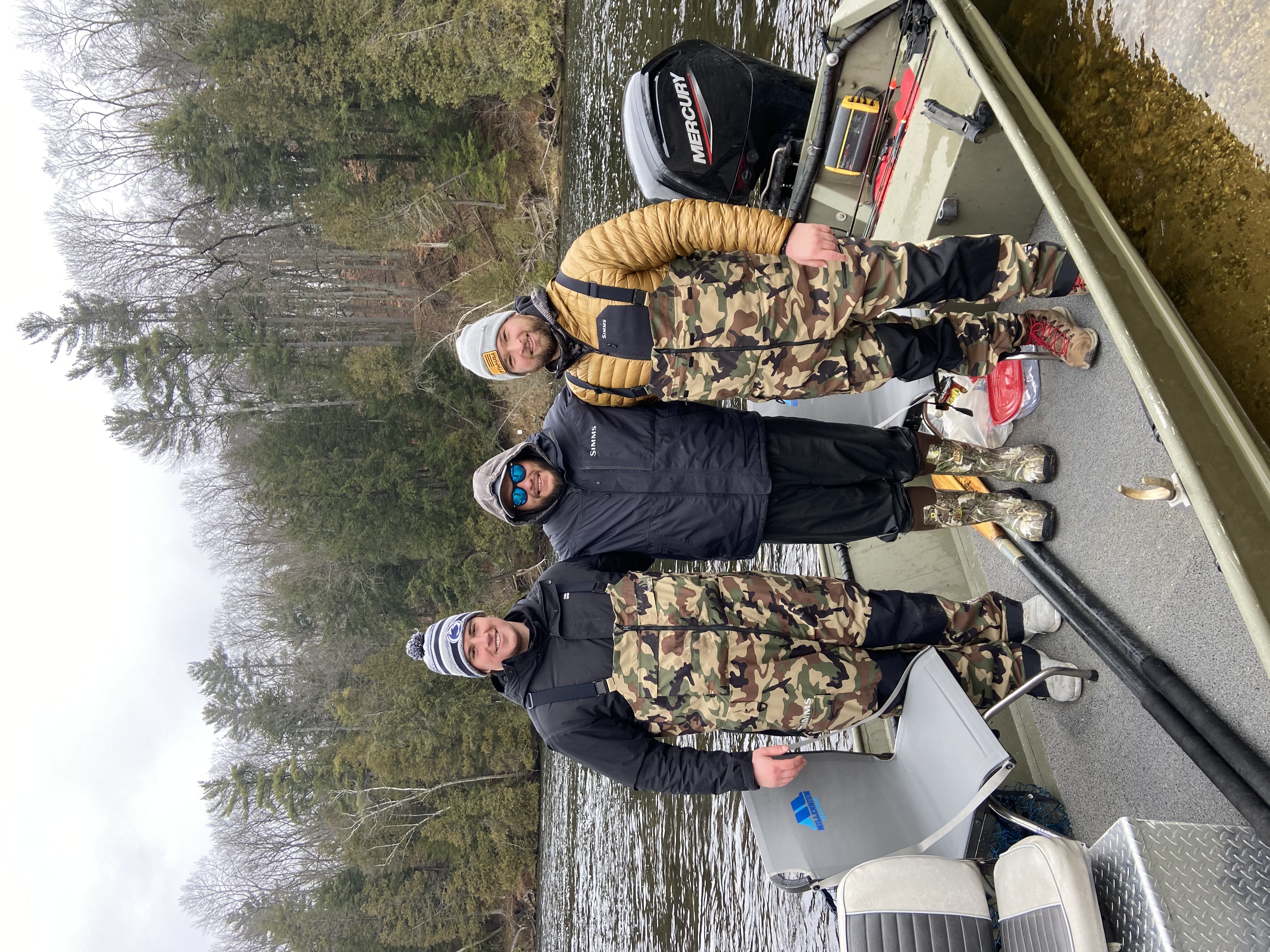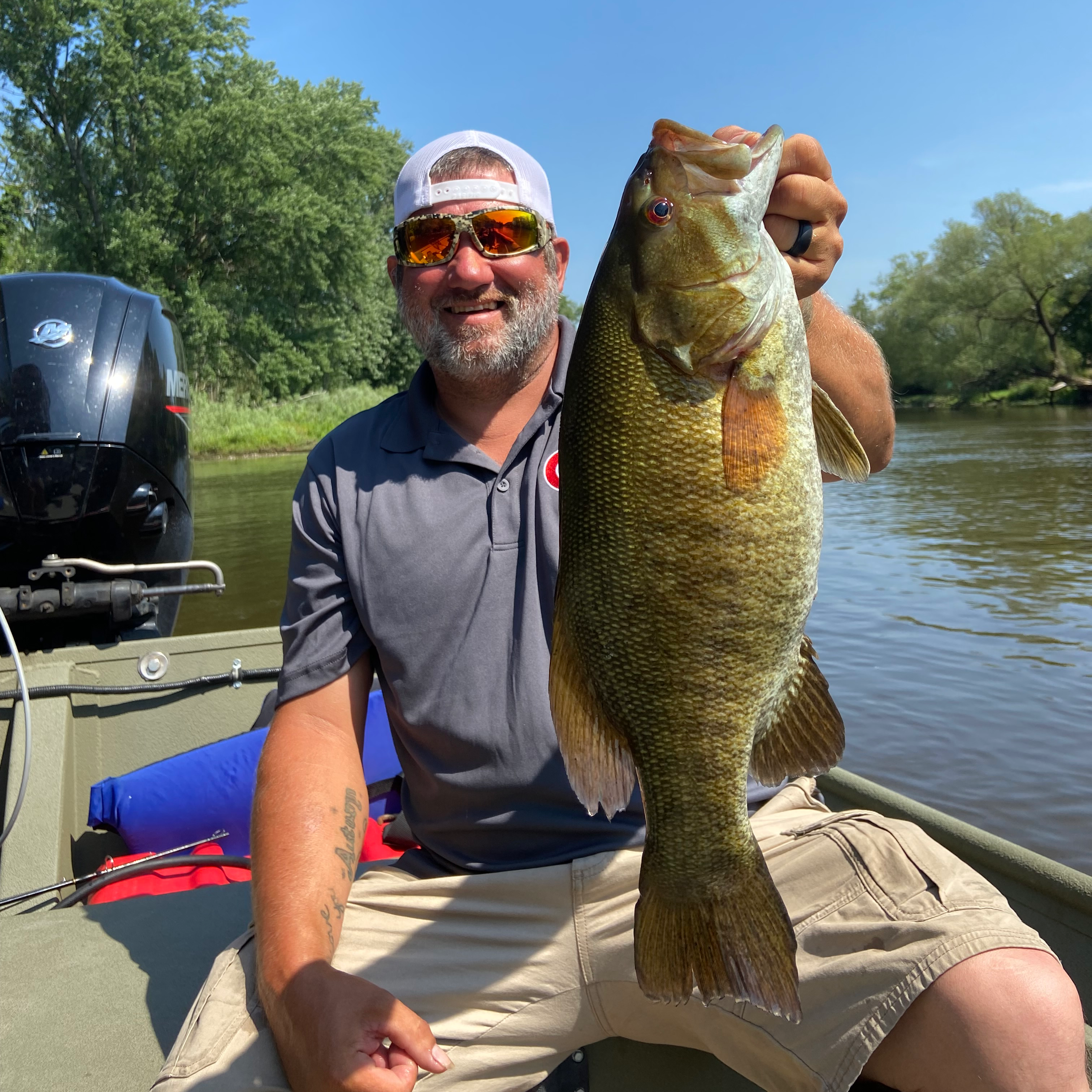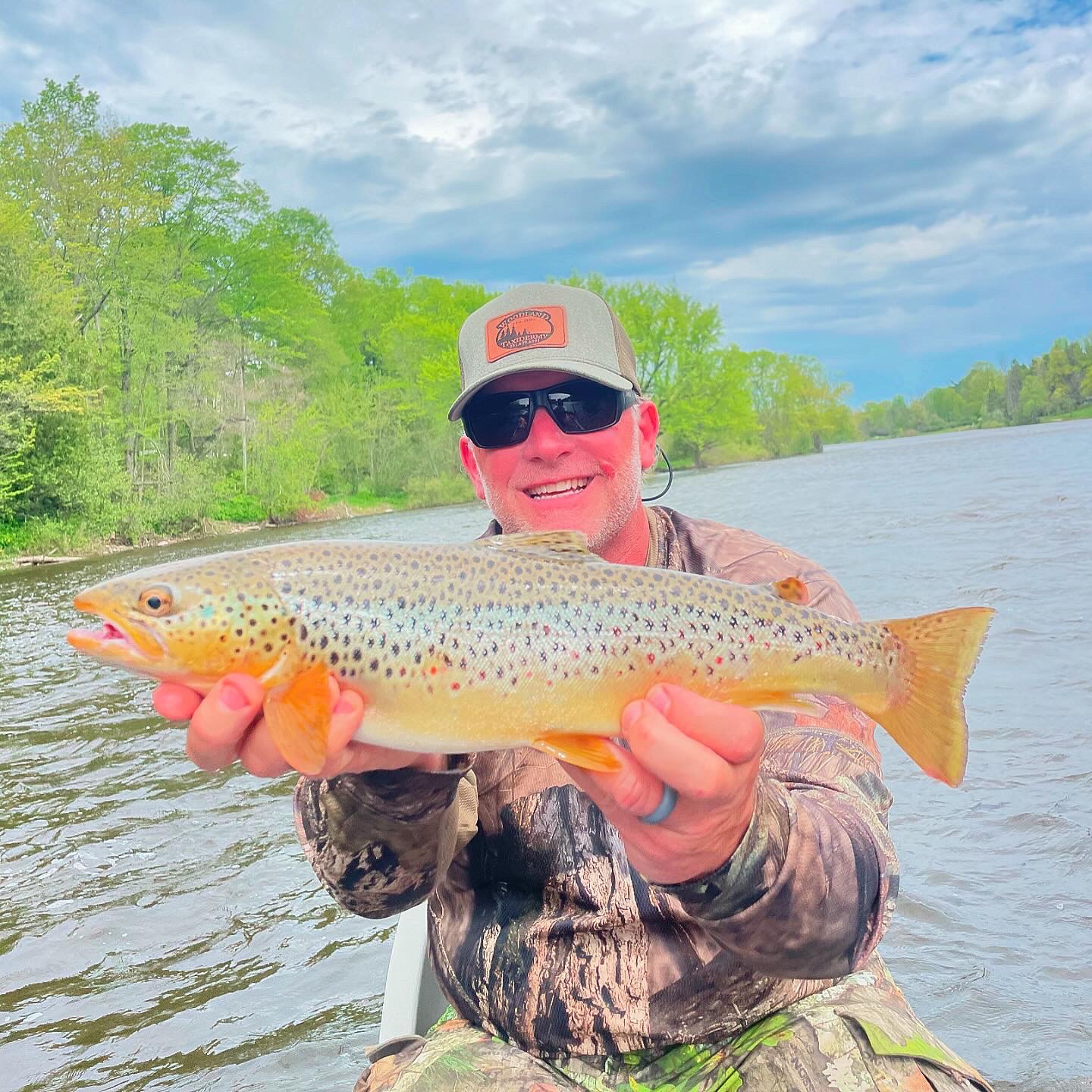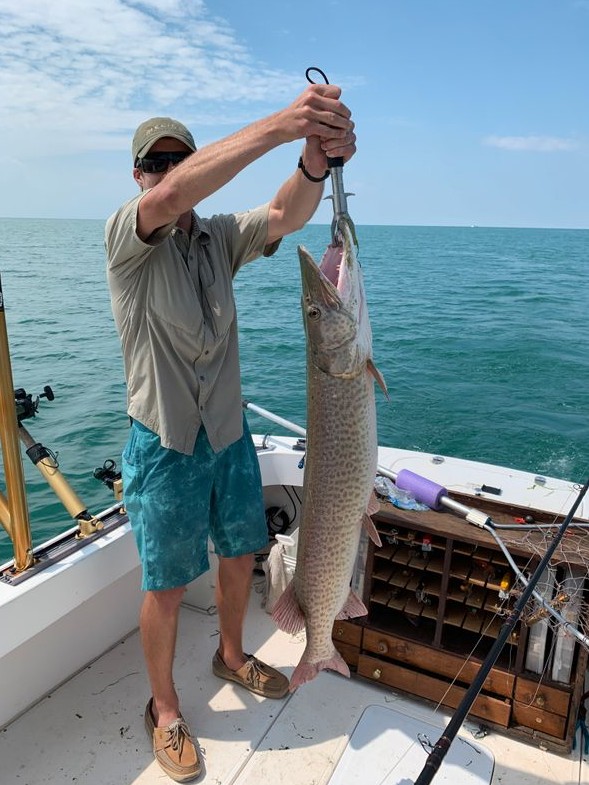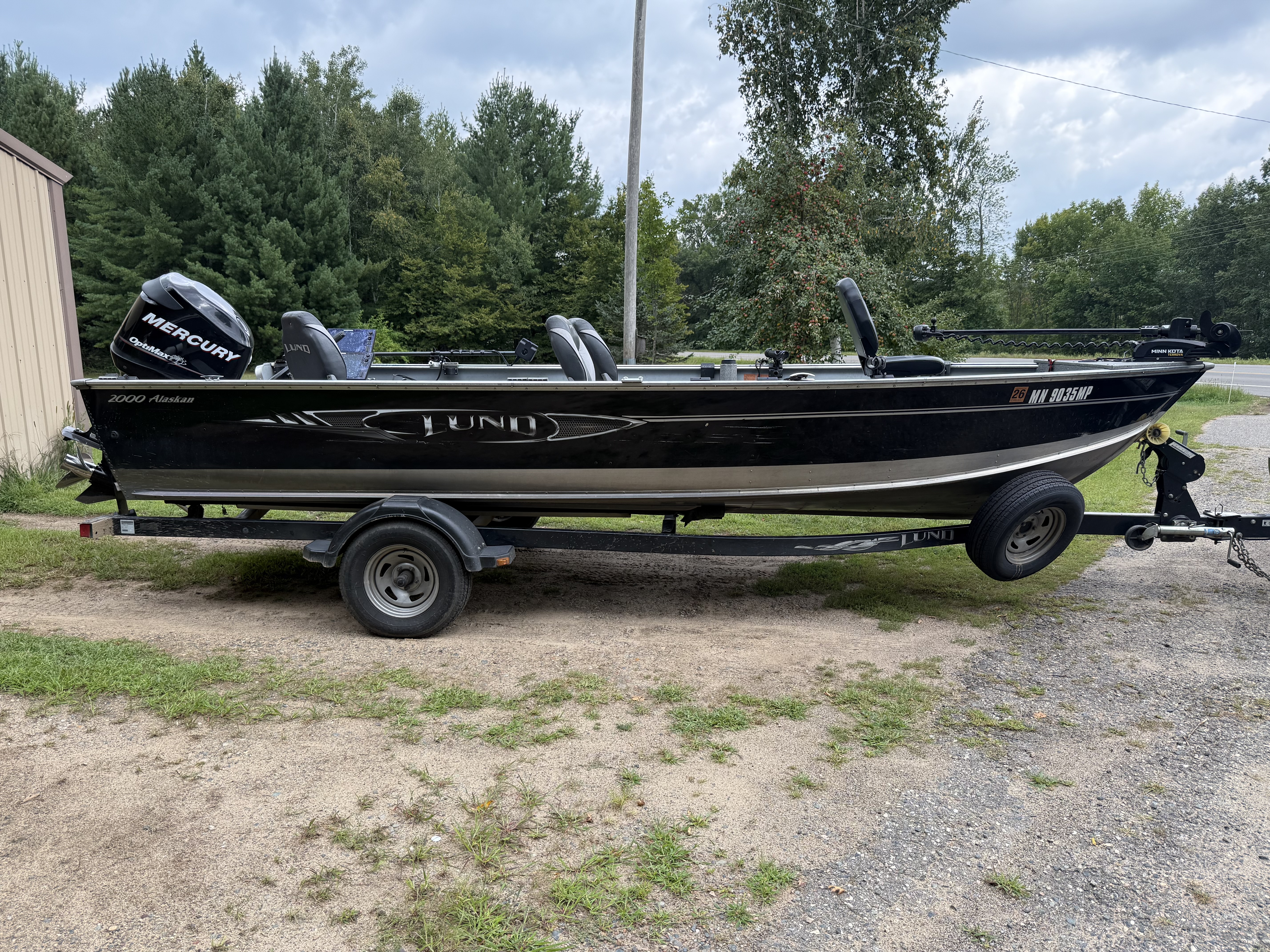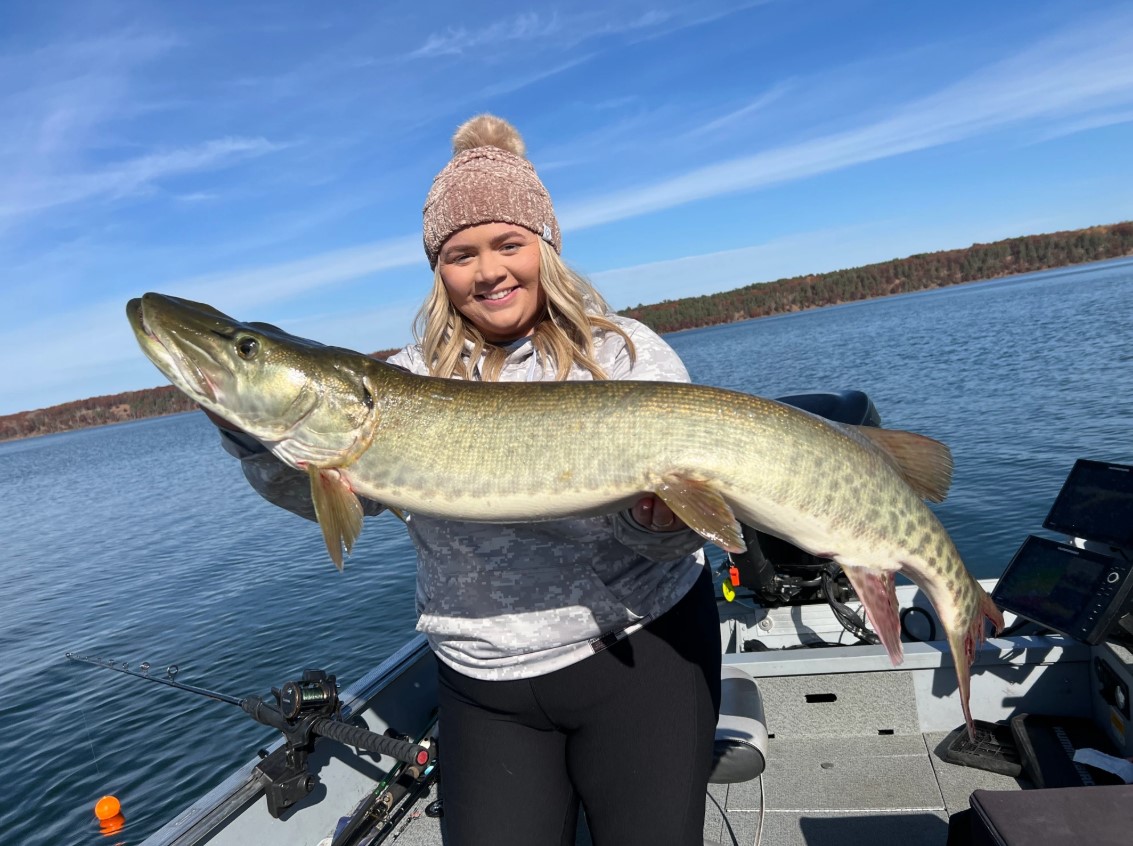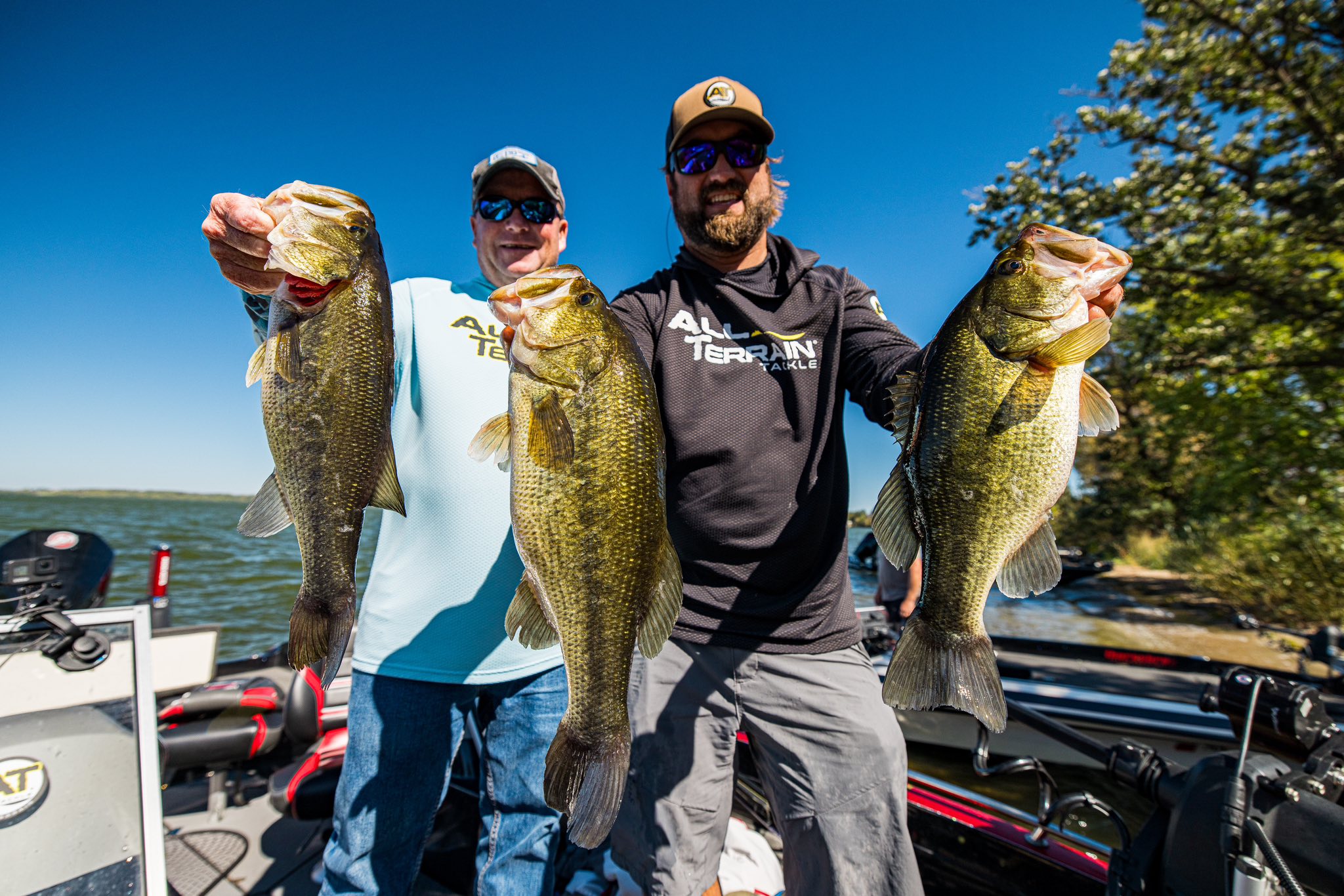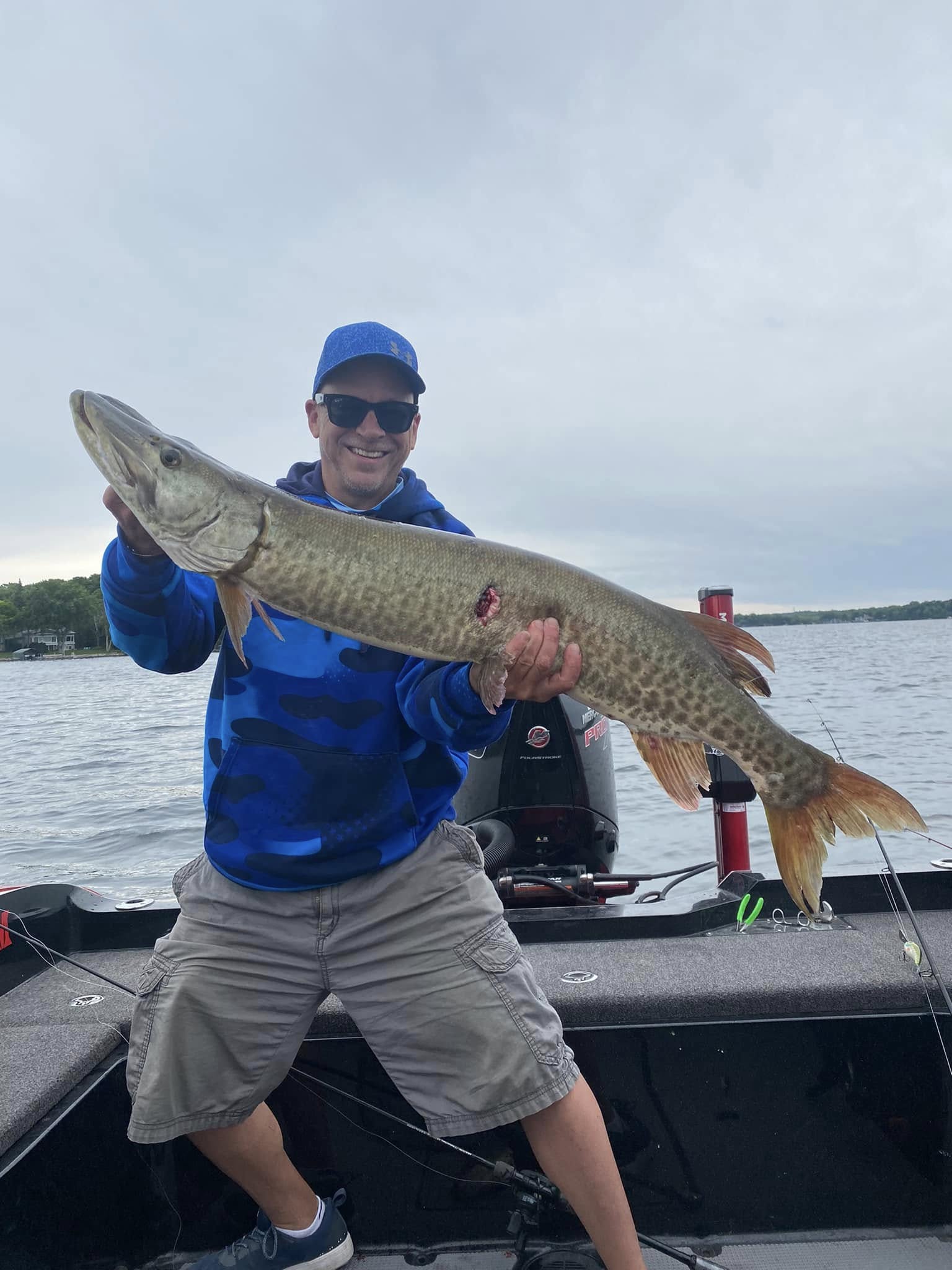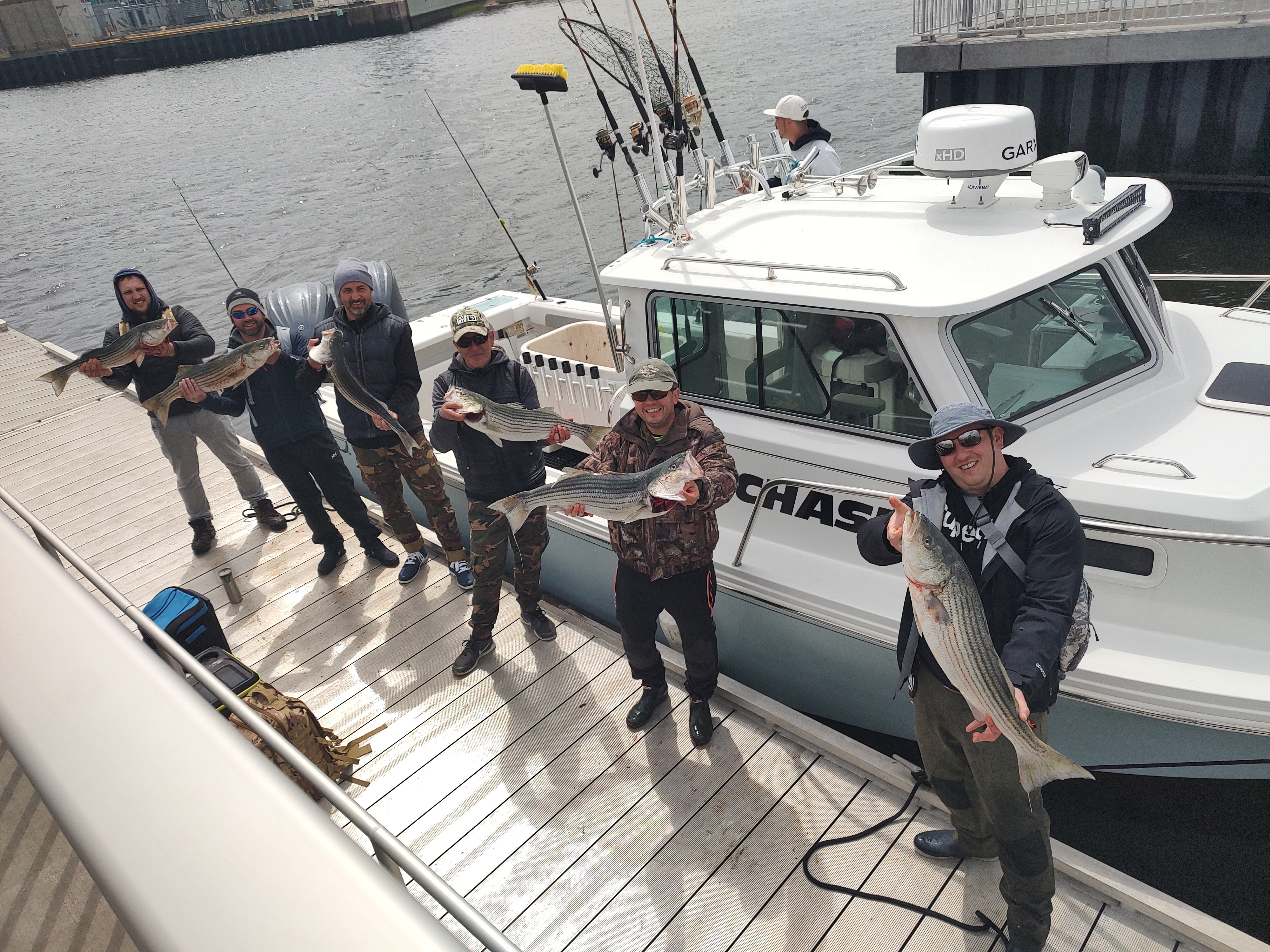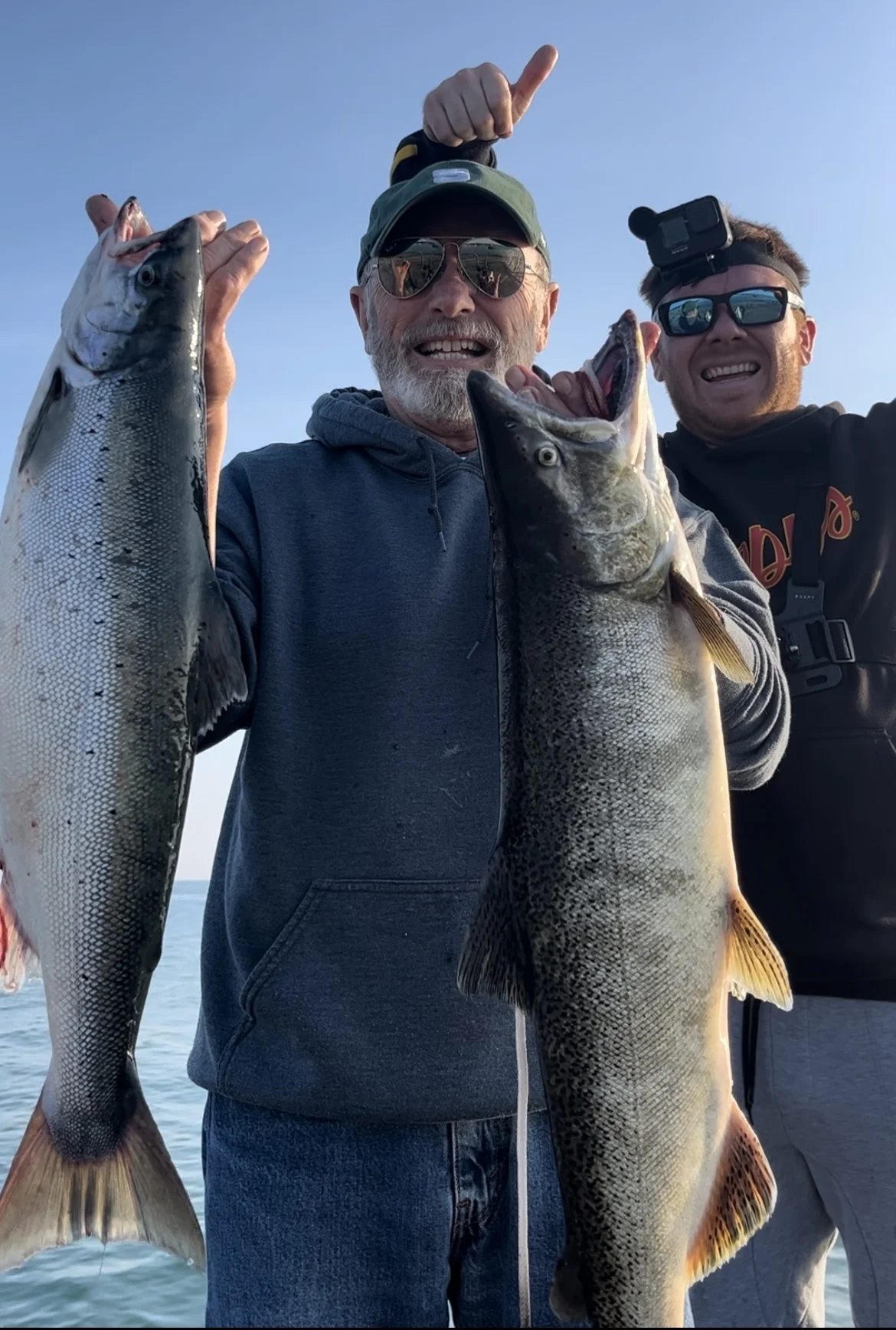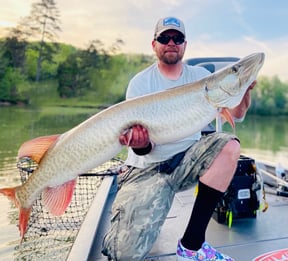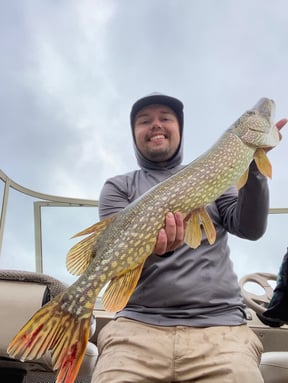Salmon Steelhead In Lexington
River, Lake Fishing in Stanwood
Ice Fishing Michigan
River, Lake Fishing in Pulaski
Morning/Afternoon Trip (6 Hrs)
River, Lake Fishing in Stanwood
Full Day Fishing
River, Lake Fishing in Stanwood
Half Day Fishing
Harsen's Island Charter Adventure
Lake Fishing Trip
Fish Like A Pro With Captain Chad
Inshore, Nearshore, Flats in Mastic
Inshore Charter
Salmon/Steelhead From Shore
We started Captain Experiences to make it easy to book fishing and hunting guides around the world. With over 2,000 Damn Good Guides, our platform makes finding and booking a trip seamless. Head here to check out our trips.
Muskie and northern pike are close relatives that frequently live together and rarely get along. These are two of the most exciting inland sportfish in the country and both have dedicated fans. However, for many anglers the similarities between these fish are sometimes easier to name than the differences. To help you understand and properly identify these fish here is a breakdown for both of these fine fish.
What is a Muskie?
The muskellunge or muskie (or musky) is an alpha freshwater predator in North America. The name muskellunge comes from tribes native to the northern US and Canada, and originally meant “great fish” or “big pike”. The fish itself is a large ambush predator with a long, thin shape built for speed. Muskie are targeted mostly for sport and as a trophy fish due to their size and the difficulty and skill involved of catching them - they aren’t known as the fish of 10,000 casts for nothing.
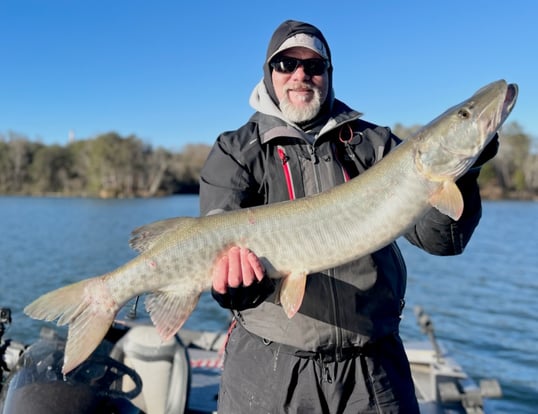
What is a Tiger Muskie?
The tiger muskie is the hybrid offspring of the muskellunge and northern pike. Tiger muskies are very rare in nature because they’re sterile and can’t reproduce on their own but due to their stout genetics, they grow larger faster than either of their parent species. Thanks to their popularity among anglers they are often stocked by fish and game organizations.
The tiger muskie can grow to over four feet long and weigh more than 30 pounds, considering many of the anglers that hook one are using tackle made for bass or perch, landing one is very difficult. Another draw of catching a tiger muskie is the beautiful markings down the length of their body. Irregular olive-colored vertical bars and spots distinctly mark the sides of a tiger muskie that otherwise have light yellow bodies.
How Big do Muskie Get?
Muskie closely resemble their family members the pike and even the American pickerel in both appearance and behavior but reach substantially larger sizes. Muskie are typically between 28 and 48 inches and between 15 and 35 pounds, but they are known to reach up to 72 inches long and 70 pounds in extreme cases. Juvenile fish tend to grow to about 12 inches in their first year.
Muskie Fishing
Musky are the apex predators in every body of water they’re found in. while the typical morning and evening hours of the day are still good times to target them, they tend to feed on their own schedule. Muskie are elusive predators in that there are relatively fewer of them, but also because figuring out what they will eat and when is quite often a mystery. Even the experienced musky angler is considered successful if they catch one fish or even just get a few bites in a week.
Fishing for Musky in lakes tempts anglers to search deeper waters for these giant fish. However, big fish don't always live in deep water. Musky can be found in two to twelve feet of water. vegetation, rocks, docks, and sunken timber make great ambush spots for these fish. In rivers, musky are looking for cover in slack waters where they can rest but seize the opportunity if a meal floats by. Trolling for muskie is not uncommon but it seems most anglers perfer targeting them with casts. While there are books, blogs, and shows about catching musky, there is little consensus on reliable lure and bait selection. The types of lures thrown for these fish include spinners, spoons, hard baits and jigs. Jigs tend to be a little small for these large predators, most various hardbaits, spinners, and spoons. The issue here is that muskie are huge and their meals also need to be of adequate size for them to be interested. This means musky lures start around seven inches long but can be 18 inches or more. Don’t be afraid of big presentations.
What is a Northern Pike?
The northern pike is a species of freshwater carnivorous fish common in cool water. Pike are popular gamefish and are also known as great northern pike, northern, (in the U.S. Upper Midwest) and jackfish. The northern pike gets its name because of the long and sharp resemblance they share with the pole-weapon which is also called a pike. Perhaps best said by the Minnesota DNR “If you haven’t fished for northern pike you should. It's a cool fish.”
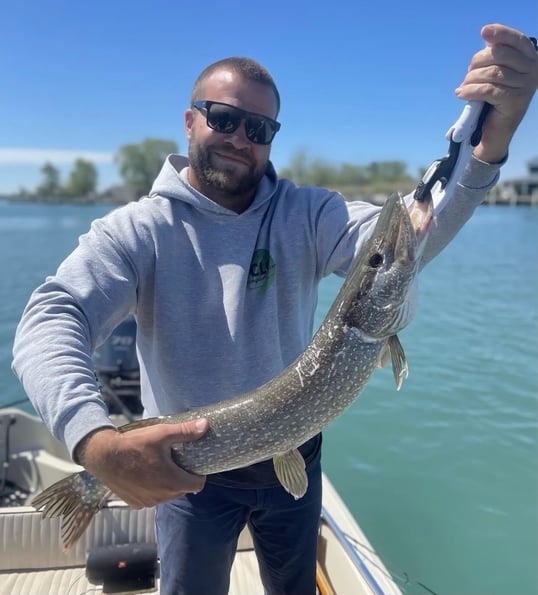
Pike are olive green with yellow undertones which contrast their white belly. Their sides feature dark vertical bars and sometimes spots that vary in number. The lateral line of a pike stretches down their body and stays intune with vibrations in their environment. For pike, these sensory areas also include the bottom of their gill plate and pores on its head and lower jaw. Although pike and musky share a strong resemblance, the pike has light markings on a dark body background.
How Big do Northern Pike Get?
The northern pike grows relatively large with an average length of about 16 to 22 inches but have been recorded at lengths of almost 60 inches. These long spear shaped fish typically weigh two to five pounds with the record northern pike weighing 55 pounds. The Lifespan of a northern pike is between 10 to 15 years, but they can live as long as 25 years.
Fishing for Northern Pike
Northern pike, like most predatory fish, tend to be particularly active during low-light hours of the early morning and evening. In the full sun of the afternoon, the pike bite tends to slow down. While other cool water fish like walleye can be caught at night, northern pike activity is minimal.
To target pike in lakes anglers should look for areas that sit in two to fifteen feet of water that contain vegetation, rock points, or other structures. As an ambush predator, pike use the structure and cover to hide while they wait for prey to swim by. When fishing in rivers, pike are often found near logs, cuts, and rocks but really any structure could hold a northern. There are two popular methods for catching pike, trolling and casting. With northern pike being such a popular gamefish, there are time tested lures that seem to always perform. The most reliable and effective pike lures are spinners, spoons, hard baits and jigs. Jigs tend to be a little small for these large predators most of the year but for ice fishing it’s very effective. While moderately sized lures are effective, pike will happily take on prey up to a third of its length. This means lures up to seven or eight inches are fair game.
Pike vs. Musky
While Musky and northern pike are fairly similar in appearance, musky tend to be larger and more pale in color. One of the more clear differences is that northern pike have distinct oblong spots of color randomly covering their sides while musky have faded irregular vertical stripes or dots, and sometimes no markings at all. On the other hand, tiger muskie have unique vertical stripes that are more numerous and opaque than the muskie. All of these toothy species are built to be efficient hunters and will eat almost anything that crosses their path. This includes everything from reptiles and mammals to other fish. Both fish have been seen trying to eat prey that appears almost too large to fit in their mouth. Large musky will eat a northern pike if the opportunity arises.
Fishing for these fish requires a lot of the same styles and colors of lures. They most obvious difference is the size of the lure. Pike are commonly caught on lure that range from four to eight inches long while a large musky may not even bother with lures that small. This also means that musky tackle needs to much stronger in order to throw these big baits and catch these giant fish. In most cases, pike can be caught on light and medium tackle. The biggest difference anglers will notice between these fish is that pike are more numerous and happy to eat a variety of different lures on any given day which generally makes success more attainable. Musky tend to be painfully particular about what they want to eat and being that there are fewer of them means that your odds of catching one tend to be low.
Book Your Next Fishing Trip
No matter which species you're after, Captain Experiences offers access to the best muskie and pike fishing guides out there. Find and book your perfect fishing trip online in minutes.
Joey Butrus
Updated on November 13, 2023

November 7, 2023

October 26, 2020

November 15, 2023

April 26, 2022

June 22, 2022
Related Articles
September 12, 2022
August 1, 2022
September 3, 2022
Featured Locations
- Fishing Charters Near Me
- Austin Fishing Guides
- Biloxi Fishing Charters
- Bradenton Fishing Charters
- Cabo San Lucas Fishing Charters
- Cancun Fishing Charters
- Cape Coral Fishing Charters
- Charleston Fishing Charters
- Clearwater Fishing Charters
- Corpus Christi Fishing Charters
- Crystal River Fishing Charters
- Dauphin Island Fishing Charters
- Daytona Beach Fishing Charters
- Destin Fishing Charters
- Fort Lauderdale Fishing Charters
- Fort Myers Fishing Charters
- Fort Walton Beach Fishing Charters
- Galveston Fishing Charters
- Gulf Shores Fishing Charters
- Hatteras Fishing Charters
- Hilton Head Fishing Charters
- Islamorada Fishing Charters
- Jacksonville Fishing Charters
- Jupiter Fishing Charters
- Key Largo Fishing Charters
- Key West Fishing Charters
- Kona Fishing Charters
- Lakeside Marblehead Fishing Charters
- Marathon Fishing Charters
- Marco Island Fishing Charters
- Miami Fishing Charters
- Montauk Fishing Charters
- Morehead City Fishing Charters
- Naples Fishing Charters
- New Orleans Fishing Charters
- New Smyrna Beach Fishing Charters
- Ocean City Fishing Charters
- Orange Beach Fishing Charters
- Panama City Beach Fishing Charters
- Pensacola Fishing Charters
- Pompano Beach Fishing Charters
- Port Aransas Fishing Charters
- Port Orange Fishing Charters
- Rockport Fishing Charters
- San Diego Fishing Charters
- San Juan Fishing Charters
- Sarasota Fishing Charters
- South Padre Island Fishing Charters
- St. Augustine Fishing Charters
- St. Petersburg Fishing Charters
- Tampa Fishing Charters
- Tarpon Springs Fishing Charters
- Venice Fishing Charters
- Virginia Beach Fishing Charters
- West Palm Beach Fishing Charters
- Wilmington Fishing Charters
- Wrightsville Beach Fishing Charters
